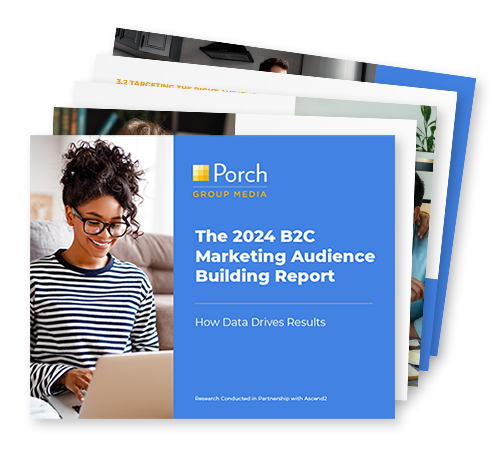Programmatic advertising has become a significant part of the advertising industry, with marketers spending billions of dollars on programmatic ad campaigns every year.
Just how big is the programmatic advertising market? According to eMarketer:
- Programmatic advertising spending is projected to reach an incredible $187.7 billion worldwide by 2024.
- In the US alone, this spend is expected to reach $99.2 billion by 2024.
- By 2024, programmatic advertising is projected to account for 85% of all digital display ad spending in the US.
What is Programmatic Advertising?
Programmatic advertising is a method of buying and selling digital advertising inventory through an automated process.
Instead of manual placement, programmatic advertising relies on algorithms to purchase ad space on websites, mobile apps, and other digital media.
This process involves a few key players: advertisers, publishers, and ad exchanges.
- Advertisers use programmatic platforms to set parameters for their campaigns, such as target audience and budget. Anyone who has a product or service that wishes to place ads is considered an advertiser.
- Publishers are the owners, “suppliers”, or “sellers” of digital ad space online and make their inventory available for purchase through ad exchanges, which use algorithms to match ads with the most relevant inventory and deliver them to the right audience. Some popular publishers include Facebook, Amazon, or The New York Times.
When Did Programmatic Advertising Start?
The first programmatic advertising campaign was launched in 2009 by MediaMath, a New York-based digital marketing company.
The campaign was called “Project Apollo” and it was aimed at driving sales for a luxury fashion brand, Burberry. The campaign utilized data-driven insights to target consumers with highly personalized ads across multiple channels, including display, search, and social media.
Project Apollo was a groundbreaking campaign that showcased the power of programmatic advertising. It demonstrated how programmatic advertising could be used to reach a highly targeted audience with personalized ads in real time, leading to improved campaign performance and ROI.
Since then, programmatic advertising has become a key part of modern advertising, with advertisers and publishers adopting programmatic strategies to optimize their campaigns and reach their target audience more efficiently.
6 Programmatic Advertising Trends
This year, programmatic advertising is set to undergo significant changes as advertisers and publishers strive to improve their strategies and stay ahead of the curve.
Let’s explore some of the top programmatic advertising trends we are seeing.
1. Increased use of AI and Machine Learning
AI and machine learning technologies are becoming increasingly sophisticated, and advertisers are using them to optimize their programmatic advertising campaigns.
Using these technologies, vast amounts of data can be analyzed in real-time, providing insights into audience behavior, campaign performance, and optimization opportunities.
2. Emphasis on Privacy
With privacy becoming a major concern for consumers, the programmatic advertising landscape is seeing greater emphasis being placed on protecting user data and ensuring compliance with data privacy regulations.
It’s becoming increasingly important to build transparency into programmatic advertising strategies, so users can understand what data is being collected and how it’s being used.
3. The Growth of Programmatic Audio
Programmatic audio is set to become a more significant part of programmatic advertising strategies.
With the growth of voice assistants and smart speakers, advertisers are recognizing the potential of programmatic audio advertising to reach a large and engaged audience.
4. Cross-Device Targeting
As consumers move between devices, advertisers are adopting cross-device targeting strategies to ensure their programmatic advertising campaigns are reaching the right audience at the right time.
By analyzing user behavior across multiple devices, advertisers can create a more comprehensive view of their audience and optimize their campaigns accordingly.
5. Increased Adoption of Programmatic TV
Programmatic TV is set to become a more significant part of programmatic advertising strategies. CTV advertising is a form of digital advertising that appears within streaming content.
6. Emphasis on Brand Safety
With concerns over ad fraud and brand safety, advertisers are placing greater emphasis on ensuring their programmatic advertising campaigns are running on high-quality, brand-safe inventory.
Advertisers are adopting tools and technologies that allow them to monitor their campaigns and ensure they’re running on safe inventory.
Programmatic Advertising and Audience Targeting
Programmatic advertising enables advertisers to reach a wide range of audiences across different channels and devices. Here are some examples of the types of audiences that can be reached with programmatic advertising:
- Behavioral Targeting: Advertisers can use data to target audiences based on their online shopping behavior, such as their browsing history or previous purchases.
- Demographic Targeting: Advertisers can target audiences based on demographics such as age, gender, income, and location. This can help advertisers tailor their messages to specific segments of their target audience.
- Interest-Based Targeting: This allows advertisers to target audiences based on consumer interests and hobbies and other lifestyle indicators.
- Lookalike Targeting: Advertisers can use data to target audiences that are similar to their existing customers or website visitors.
- Contextual Targeting: Programmatic advertising can also target audiences based on the context of the content they’re viewing. For example, an advertiser selling running shoes may want to target audiences reading articles about marathons or fitness.
- Movers and Homeowners: Those in the move and homeowners journey are a highly lucrative audience for brands – these consumers are often looking to establish new relationships with brands and are spending big on an assortment of products and services for their homes.
By leveraging data and targeting capabilities, advertisers can create more effective and efficient campaigns that reach the right audience at the right time.
Programmatic advertising continues to demonstrate growth and evolution since the introduction of the first campaign in 2009. Expect to see even more growth and innovation in the programmatic advertising industry as it continues to evolve in the years to come.


